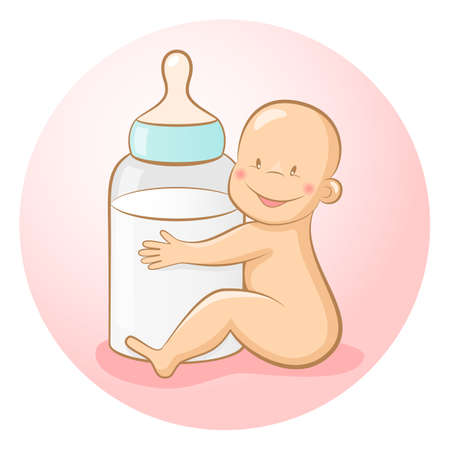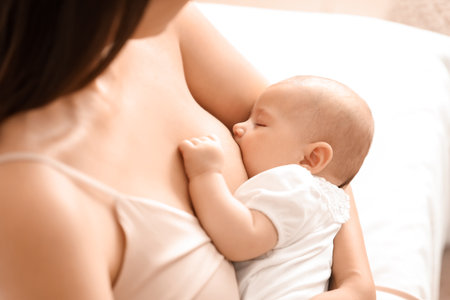1. Why Nappy Changing Matters: Hygiene and Comfort for UK Newborns
Nappy changing is more than just a routine task for new parents in the UK—it’s an essential part of maintaining your newborn’s health, wellbeing, and comfort. The British climate, with its frequent wet and chilly conditions, makes it especially important to focus on effective hygiene practices to keep your baby safe from irritation and infection. Proper nappy changing prevents the build-up of moisture and bacteria that can lead to uncomfortable nappy rash, which is particularly common in damp environments.
Understanding the Risks: Why Hygiene Is Crucial
Neglecting nappy changes or using unsuitable products can increase the risk of skin problems and infections. Here are some key reasons why maintaining strict hygiene during nappy changes is vital:
| Risk | Impact on Baby | Prevention Tips |
|---|---|---|
| Nappy Rash | Red, sore, and irritated skin; discomfort for your baby | Change nappies frequently; use barrier creams; ensure thorough cleaning |
| Bacterial Infections | Potential for serious skin or urinary tract infections | Use fragrance-free wipes; always wipe front to back; wash hands before and after changing |
| Chafing & Discomfort | Crying, fussiness, disrupted sleep patterns | Select the right nappy size; avoid tight fastenings; let skin air-dry when possible |
The UK Climate Factor: Moisture Management Matters
British weather often means increased humidity indoors and less opportunity for nappies to air out naturally. This makes it critical to use super-absorbent nappies and consider breathable materials to help wick away moisture. Taking these extra steps helps prevent prolonged dampness against your baby’s delicate skin.
Setting Up a Safe and Hygienic Nappy Changing Routine
Establishing a consistent routine ensures your baby’s comfort and reduces health risks. Always have clean hands, disinfected changing mats, and all necessary supplies within easy reach. By focusing on hygiene every time you change a nappy, you create a safer environment for your newborn—especially important during those early months when their immune systems are still developing.
Reusable vs. Disposable Nappies: Pros, Cons, and UK Trends
When preparing for your newborn’s arrival in the UK, one of the first big decisions is whether to choose reusable (cloth) nappies or disposable nappies. Each option has its own set of advantages and drawbacks, and understanding these can help you make an informed choice that suits your family’s lifestyle, budget, and values.
Cost Comparison
| Nappy Type | Initial Cost | Ongoing Expenses | Potential Savings (over 2 years) |
|---|---|---|---|
| Reusable Nappies | £200–£400 (starter kits & accessories) | Washing powder, water, electricity (£100–£150/year) | Up to £500 saved vs disposables |
| Disposable Nappies | Low (£10–£20/pack) | £500–£900/year (average use) | No long-term savings; ongoing cost |
Environmental Impact
Environmental concerns are increasingly important to UK parents. Disposable nappies contribute significantly to landfill waste, taking hundreds of years to decompose. In contrast, modern cloth nappies are designed for repeated use and can significantly reduce household waste if washed responsibly. However, the environmental impact of laundering should be considered—washing in full loads at lower temperatures and line-drying helps minimise resource use.
Convenience & Practicality
| Reusable Nappies | Disposable Nappies | |
|---|---|---|
| Ease of Use | Takes practice; needs pre-washing and storage for soiled nappies | Straightforward; simply dispose after use |
| Absorbency & Leak Protection | Good with proper fit; some trial and error required for best results | Highly absorbent; convenient for nights and outings |
| Out & About | Need to carry wet bags for used nappies; bulkier in changing bags | Lighter to pack; easy disposal when travelling or out shopping |
| Nappy Rash Risk* | Lower with frequent changes and natural fibres | Slightly higher if changed less frequently due to super-absorbency |
*Regardless of nappy type, regular changes are key to preventing nappy rash.
UK Parental Preferences & Trends
The UK has seen a renewed interest in reusable nappies thanks to eco-friendly initiatives by local councils—some even offer voucher schemes or free starter packs to encourage their use. Yet, disposable nappies remain the most popular choice due to their convenience, particularly for busy families or those without access to reliable laundry facilities. Many British parents adopt a hybrid approach: using reusables at home and disposables when out or overnight. Ultimately, your decision may come down to balancing budgetary considerations, environmental values, and day-to-day practicality.

3. Essential Nappy Changing Kit: What Every Parent Needs
Nappy changing can be a messy business, but with the right essentials, you’ll keep your newborn clean and comfortable while making life easier for yourself. Here’s a practical checklist of must-have items for UK parents, including popular product recommendations available locally.
Must-Have Nappy Changing Items
| Item | Why It’s Essential | UK Product Recommendations |
|---|---|---|
| Nappy Changing Mat | Provides a hygienic, easy-to-clean surface for every change, whether at home or on-the-go. | Mamas & Papas Deluxe Changing Mat, Mothercare Foldable Travel Mat |
| Nappies (Disposable or Reusable) | You’ll need plenty to keep your baby dry. Choose between eco-friendly reusables or convenient disposables. | Pampers New Baby, Aldi Mamia, Bambino Mio Miosolo (reusable) |
| Baby Wipes | Gentle wipes are essential for quick and thorough cleaning. | WaterWipes (99.9% water), Huggies Pure, Tesco Fred & Flo Fragrance Free |
| Nappy Cream | Prevents and soothes nappy rash, keeping your baby’s skin protected. | Sudocrem Antiseptic Healing Cream, Bepanthen Nappy Care Ointment, Metanium Barrier Ointment |
| Nappy Sacks/Bags | For hygienic disposal of dirty nappies when you’re out and about. | Sainsbury’s Little Ones Nappy Bags, Boots Fragranced Nappy Bags |
| Nappy Bin | A dedicated bin helps manage odours and keeps used nappies contained safely until disposal day. | Tommee Tippee Sangenic Twist & Click Bin, Angelcare Nappy Disposal System |
Additional Handy Extras
- Hand Sanitiser: Perfect for quick clean-ups when soap and water aren’t to hand. Try Carex or Dettol PocketBac.
- Cotton Wool Balls or Pads: Especially useful in the early weeks for gentle cleaning with warm water instead of wipes.
Safety and Practical Tips for UK Parents
- Always keep one hand on your baby during changes—never leave them unattended on a raised surface.
- If using reusable nappies, ensure you follow local council guidelines for washing and disposing of liners (check your local recycling collection service).
Your Changing Kit Checklist at a Glance:
- Nappy changing mat
- Nappies (stock up!)
- Wipes or cotton wool & water
- Nappy cream/barrier ointment
- Nappy sacks/bags
- Nappy bin or disposal system
This essential kit ensures you’re prepared for every nappy change—at home or out and about—making it safer and more convenient for both you and your newborn in the UK.
4. Safe and Effective Nappy Changing: Step-by-Step Guide
Changing your newborn’s nappy isn’t just about keeping them comfortable – it’s vital for their health and well-being. Whether you’re at home in a typical UK semi-detached or on the go using public facilities, following safe and hygienic steps is crucial. Below is a practical guide tailored to British parents, considering common home layouts and what to expect in local baby changing rooms.
Step-by-Step Instructions for At-Home Nappy Changing
- Prepare Your Space: Use a dedicated changing mat or table, ideally placed in a warm room away from draughts. Keep all essentials (nappies, wipes, barrier cream, nappy sacks) within arm’s reach but out of babys grasp.
- Wash Your Hands: Before you start, wash your hands thoroughly or use hand sanitiser if water isn’t nearby.
- Lay Down Baby Safely: Place your baby on their back on the changing mat. Never leave them unattended – even for a moment.
- Remove the Dirty Nappy: Undo the tabs and gently lift your baby’s legs by holding their ankles. Wipe away mess using the front part of the dirty nappy first, then use fragrance-free baby wipes or cotton wool with cooled boiled water (recommended by the NHS for newborns).
- Clean Thoroughly: Always wipe from front to back, especially for girls, to prevent infections.
- Apply Barrier Cream: If needed, apply a thin layer of barrier cream to prevent nappy rash.
- Put On a Fresh Nappy: Slide a clean nappy under your baby, fasten securely but not too tight. Make sure frills around the legs are pulled out to prevent leaks.
- Tidy Up and Wash Hands Again: Seal used nappies in a nappy sack and dispose of them properly. Clean the changing area with anti-bacterial spray or wipes. Wash your hands thoroughly after finishing.
Nappy Changing in Public Spaces
The UK offers parent-friendly facilities in most supermarkets, shopping centres, and attractions. Here’s how to stay safe and hygienic when you’re out and about:
| Tip | Description |
|---|---|
| Use Your Own Mat | Always place your portable changing mat on public tables for a clean surface. |
| Packed Essentials | Bring extra wipes, nappies, hand sanitiser, and disposable nappy sacks. |
| Be Aware of Bins | Look for dedicated nappy bins; if unavailable, double-bag soiled nappies until you can dispose of them safely at home. |
| Keep Baby Engaged | A small toy can help distract wriggly babies during changes in unfamiliar environments. |
| Quick Clean-Up | Sterilise hands with gel afterwards and wipe down surfaces if needed before leaving. |
Safety Tips for Every Setting
- Never leave your baby unattended on any raised surface.
- If at home, always return supplies to their safe storage spot out of children’s reach.
- If using reusable nappies or cloth wipes, bring sealable wet bags for transport until you get home to wash them properly.
Your Peace of Mind Matters
Nappy changing can be daunting at first but following these British-focused steps ensures safety and hygiene wherever you are. With practice, it becomes second nature – helping you keep your little one happy, healthy, and dry every day.
5. Nappy Disposal and Hygiene: Tips for UK Households
Proper nappy disposal is crucial for maintaining a hygienic and odour-free home, especially with a newborn. In the UK, local councils provide specific guidelines on how to dispose of nappies responsibly. Understanding these rules and adopting best practices can help you keep your home clean and safe for your family.
Understanding UK Council Guidelines
Most UK councils require disposable nappies to be placed in your general waste bin rather than recycling or garden waste bins. Some areas offer special nappy collection schemes, particularly if you have multiple children in nappies or medical needs. Always check your local council’s website for the most up-to-date information.
| Council Area | Nappy Disposal Guidance |
|---|---|
| London Boroughs | General waste bin; some boroughs offer nappy collection services upon request |
| Manchester | Place in grey/black bin; no recycling options for nappies |
| Birmingham | General waste bin only; use nappy sacks for hygiene |
| Glasgow | General waste bin; register for uplift if using reusable nappies |
Best Practices for Safe and Hygienic Nappy Disposal
- Use Nappy Sacks: Always place used nappies in fragranced, biodegradable nappy sacks before disposing of them in the main bin. This minimises smells and contains bacteria.
- Dedicated Nappy Bin: Invest in a lidded nappy bin with an odour-blocking system. Empty it regularly—ideally every day—to prevent lingering smells and germs.
- Clean Hands: Wash your hands thoroughly after every change, even if you’ve worn gloves or used wipes.
- Disinfect Surfaces: Wipe down changing mats, bins, and any surfaces touched during changes with antibacterial spray or wipes to reduce the risk of infection.
Maintaining an Odour-Free Home Environment
- Avoid Overfilling Bins: Keep your nappy bin from becoming too full, as this increases odour and can attract pests.
- Add Odour Neutralisers: Use natural odour absorbers like baking soda or charcoal sachets at the bottom of your nappy bin.
- Adequate Ventilation: Ensure good air flow in your changing area by opening windows or using extractor fans where possible.
- Laundry Routine for Reusables: If using cloth nappies, wash them promptly at 60°C with non-bio detergent to kill bacteria and eliminate smells.
Your Local Council’s Role in Nappy Waste Management
If you’re unsure about disposal rules or want to sign up for a dedicated nappy collection scheme, contact your local council directly. Many councils are working towards more sustainable waste management solutions and may offer advice on reusable alternatives, grants, or support groups for eco-conscious parents.
6. Top Tips for Out and About: Nappy Changing on the Go in the UK
Changing your newborn’s nappy while you’re out and about can feel daunting, especially with the unpredictable British weather and varying public facilities. However, with the right preparation, you can make nappy changes safe, hygienic, and stress-free wherever you are—whether you’re shopping on the high street, enjoying a day at a National Trust property, or travelling across the UK. Here are some practical tips to ensure smooth nappy changes outside your home:
Be Prepared: Your Portable Nappy Kit
Keep a well-stocked changing bag ready to grab at a moment’s notice. Essentials to include:
| Item | Purpose |
|---|---|
| Travel Changing Mat | Provides a clean surface in any location |
| Nappies (at least 3-4) | Covers unexpected delays or accidents |
| Wipes (fragrance-free) | Gentle cleaning for sensitive skin |
| Nappy Sacks/Biodegradable Bags | Hygienic disposal of used nappies and wipes |
| Barrier Cream (travel size) | Protects baby’s skin from irritation |
| Hand Sanitiser | Cleans hands when water isn’t available |
| Spare Vest/Outfit | Tackles leaks or spills |
Know Your Changing Spots Across the UK
Most shopping centres, supermarkets, train stations, and popular attractions offer dedicated baby changing facilities. Look for signs indicating “baby changing” or ask staff if unsure. Many venues now offer gender-neutral family rooms for added convenience.
Tip:
If you’re planning a long journey, check online for service stations with baby-friendly amenities or use apps like ‘Baby Change UK’ to locate nearby facilities.
Safety First in Public Spaces
- Always use your own travel mat for hygiene.
- Never leave your baby unattended on raised surfaces.
- If a changing table looks unclean or unsafe, opt for a mat on the floor instead.
Managing Waste Responsibly
The UK encourages proper disposal of nappies—always use designated bins in public loos. If none are available, double-bag soiled nappies and take them home.
Packed Weather-Wise?
The British weather can be changeable. In colder months, pack an extra blanket to keep your newborn warm during outdoor changes. During summer outings, choose shaded spots to prevent overheating.
Your Go-To Checklist Before Leaving Home
| Check | Reason |
|---|---|
| Nappy bag restocked? | Avoid running out of essentials mid-trip |
| Weather-appropriate gear packed? | Keep baby comfortable whatever the forecast |
| List of local facilities checked? | Saves time searching when it’s urgent! |
| Bottle of water for you? | Stay hydrated while caring for your little one |
With these safe and practical strategies tailored to the UK’s unique environment and culture, you’ll be well-equipped for hassle-free nappy changes on the go—so you can focus on making memories with your newborn wherever your adventures take you.


